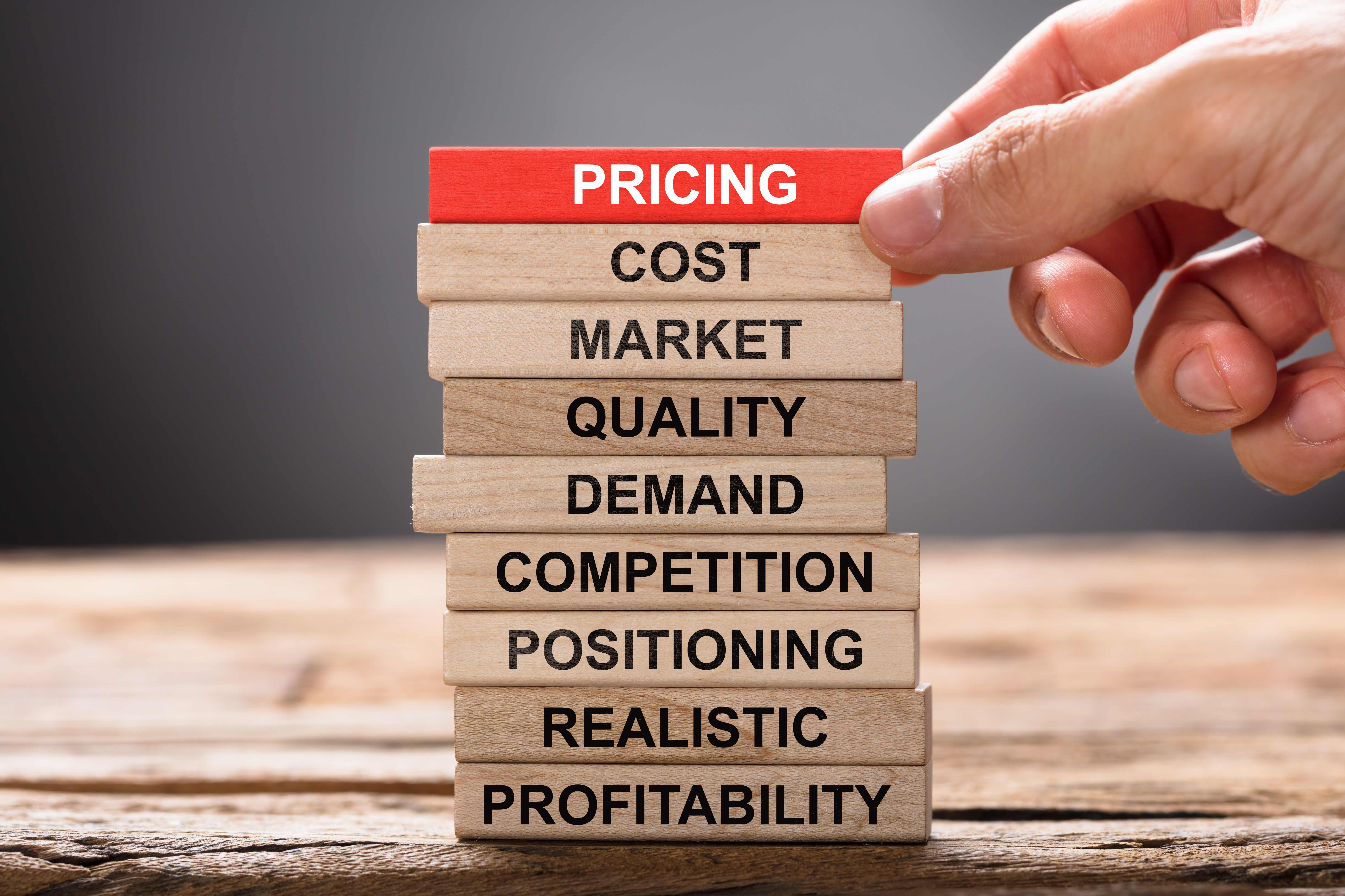How Price Management Software Works
November 16th, 2022 (Updated 03/09/2023) | 9 min. read
By Idrissa Diop
Are you struggling with pricing your products accurately across multiple countries or other jurisdictions that your organization is operating in? And/or maybe you’re so stuck in a never-ending loop of manual price list updates in Excel that you can’t keep up with the rapid cost increases, supply chain disruption and other current inflationary pressures? If that’s the case, it sounds like the time is overdue to consider a price management software solution for your business. So, join us in this article as we will give you an in-depth look and what the technology does and how price management software works.
At Pricefx, as one of the world’s leading pricing management software vendors, we have assisted hundreds of organizations over the last decade and more in customizing the type of technological solutions they require for successfully meeting their own set of unique business objectives.
So, to get the ball rolling, let’s first analyze exactly what pricing management software does before we move on to discussing how it works and the considerable benefits possible for most types of business.
What Price Management Software Does
Pricing Management Software helps you build into and integrate all perspectives and information necessary to consistently arrive at optimal pricing decisions.
In other words, informed by your customer, product and sales data, the technology helps you keep your pricing consistent, and it is automated, reducing the opportunity to make manual errors.
The pricing management software technology can assist in managing your pricing in two major ways:
- Internal Price Management
- External Price Management (Against your competitors)
Internal Price Management
Strong price management software facilitates the continuous improvement of your company’s suite of pricing tools and processes to cultivate global pricing knowledge and tap into it on a day-to-day basis.
Kissing goodbye to manual price list updating and other manual processes, pricing management software helps you keep consistency between your product range, across any level of granularity from product to category level. Even within a specific product range, pricing management software supplies smart price insights into how the products should be positioned in price, one versus another and edits those prices over time as conditions change without making manual mistakes.
External Price Management (Against your competitors)
No matter what you are selling and/or whether you belong to the B2B or B2C group, tracking and taking account the prices of your competitors is an important factor. An automated price management software tool can take the pain and manual time of positioning your products competitively and simultaneously aligned with your business objectives.
In a highly competitive market, customers have plenty of options to choose from, particularly now that most products are available online (even in the B2B environment, more companies are turning to doing business online – see the article directly below for more information).
For example, if you and a competitor have several similar products available across a wide range of price ranges that are similar in quality or in the caliber of their components, people may easily dump your brand because a lower-priced alternative is easily available with your competitor.
Companies using price management technology can adjust/align the prices of their products or services automatically against their competitors. Firms without the resources of a pricing management software solution are bound to ‘follow the leader’ as they may not have the budget or resources to carry out regular or automated technology-driven price audits.
Are you a leader or a follower?
5 Major Ways Price Management Software Works

To maximize your profits and stay ahead of your competitors, you’ll need to be able to price your products at the absolute optimum level. If you’re not, trying to hit the pricing targets that will help you to successfully achieve your company’s business objectives will be like throwing darts in the dark.
Without price management software, it will be tough to define and ultimately track a goal to work towards.
With a price management software solution, it will add light and data-informed ideas to where you are heading by working to:
- Keep consistency in your Price Lists and avoid pricing discrepancies
- Consider all your pricing constraints
- Manage relationships between your different product families
- Define Your Pricing Strategy at any level of granularity
- Establish Insights through Price Simulation
1. Keep Consistency in your Price Lists and Avoid Pricing Discrepancies
Traditionally for many businesses price management has been conducted using Excel spreadsheets to calculate optimum prices – and to convey these prices to all concerned in the sales process, your sales team and the customer.
However, old-fashioned manual methods are susceptible to error, manipulation and corruption. Ever had the issue of remembering which Excel price list is the most current? We have too and feel your pain.
Without a modern price management software system, it is hard to keep those price lists current and error-free. Automate your price lists updates in minutes rather than months and maintain your margins rather than leak margin as your manual updates can’t keep track of the rate of change in your costs.
What’s more, Excel is also incapable of supporting quick decision making. You could possibly miss out on a sale because of the time it takes to get the best price out to your customer. The solution is to invest in price management software that does all the calculations for you in real-time.
2. Consider All Your Product Constraints
Pricing constraints are any barrier that limits an organization’s ability to manipulate or adjust the price in order to achieve their desired business objectives.
Some of the most common pricing constraints that companies are confronted by when pricing their products include:
- Product Demand – The quantity of products demanded may affect your price setting because some products are elastic in their pricing. So, if your company wants to increase the price of your key product from $50 to $75, demand may decrease as a result, and you may be forced to drop the price within your customer’s desired price range/s.
- Production Costs – Production costs vary, however, as businesses seek to earn a profit, product prices may be required to remain above a certain price level, particularly when inflationary and recessionary conditions prevail. If the costs of the raw materials or the ingredients used in your production are changing weekly, daily (or even hourly in extreme cases), being able to track them in real-time with your price management software tool will be critical to your profitability.
The above are some examples of the more common pricing restraints.
With an intelligent and automated pricing software solution, you’ll be able to consider these and numerous additional pricing constraints into your pricing simultaneously, such as:
- Demand for product class, product, and brand
- Newness of the product: including its stage in the product life cycle
- Single product vs a complete product line
- Cost of producing and marketing products
- Cost of changing prices and time periods that they apply
- Types of competitive markets
- Your competitors’ prices
3. Manage Relationships Between Your Different Product Families
As your products gain market share, you may create additional versions of the same product in order to satisfy the differing needs of their market segments. Once the initial price that you set for a single product in its introduction stage, the pricing of other later versions on the product line must be aligned with the initial price as the product life cycle develops.
For example, when Apple introduced its iPad, as a unique product in the introductory stage of its product life cycle, Apple had a lot of latitude in setting the price. It was the first commercially successful tablet device sold. As later versions were introduced, they were priced based on how much innovation each product carried compared to the first one.
Similarly, if you have entry-level products, mid-level products and premium-priced products you can use price management software to manage the price relationship between differentiations in your ‘product family’ to avoid cannibalizing your brand and creating customer confusion.
How the Volkswagen Group differentiates between prices between Skoda as their entry-level product, VW as the mid-level product and Audi as their premium-priced product is a great example of this.

Price management software will help you organize the pricing of your product families.
4. Define Your Pricing Strategy at Any Level of Granularity
Using a pricing software solution, you will consistently make better, more accurate, more confident, and more informed price list update decisions if they are backed up by the data you are feeding into your pricing software (at any level of granularity that you require insights into).
Understanding your customers through data to support your intuition instead of relying on second guessing yourself is critical.
This means analyzing your own historical data on how your prices have changed, why they’ve changed, and how your customers have reacted.
Likewise, price management software also makes it possible to analyze your offering at any level of granularity in terms of different products or by whichever channel (online or in-store), bulk purchases vs single purchases etc. The breakdown is only limited by your imagination.
5. Establish Insights Through Price Simulation

A quality pricing software tool will enable you to run multiple ‘what-if’ scenarios with your pricing by testing various pricing scenarios to suggest the most sustainable and cost-effective way to achieve your business goals.
Pricing simulations through advanced simulated testing help businesses just like yours to imitate the impact of price changes without applying the new price in real life, risk-free, to give insights into the outcomes of the proposed price changes.
For example, perhaps you want to test the outcome to discover if people are more willing to pay $50 rather than your current $45 for your 25lb sack of sugar, and/or what would be the projected income for the same product at $55?
Without being tested in safe mode, the approximate implementation of a pricing policy could be as calamitous as the lack of any strategy at all. And that is where the insights of the pricing simulation capability of price management software technology can assist.
That’s Great – But is Price Management Software Right for Me?
Now you know how price management software works and the alignments and pricing insights that it can provide for most businesses.
You may already have an idea if the innovative technology of a price management software like the award-winning Pricefx or similar is something that can help your organization achieve its business objectives, but you would like to make sure.
To dive a little deeper into price management software, check out the handy article below for further benefits of the technology and to drill down into who it is right for and who may not need it at all.

